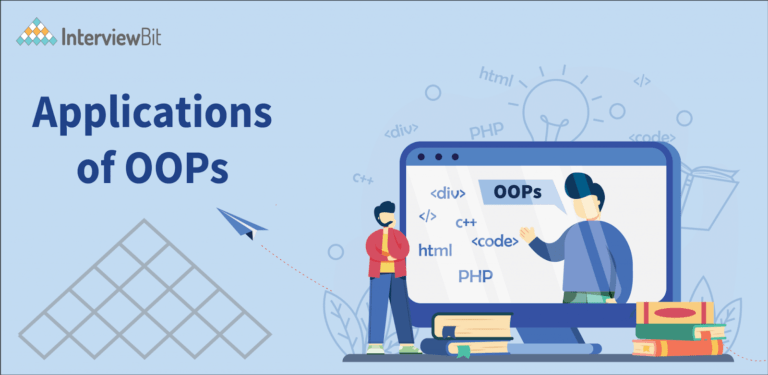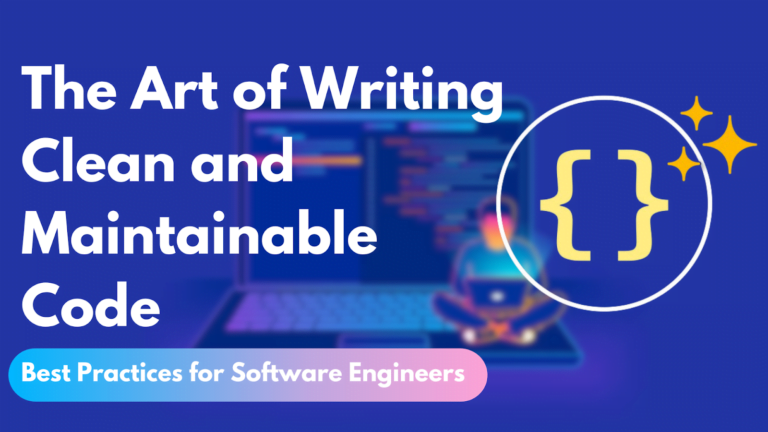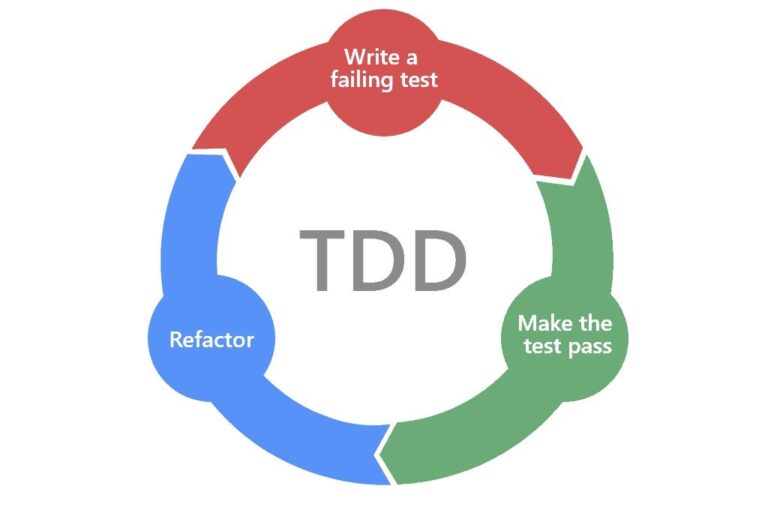Object-Oriented Analysis and Design (OOAD) is a fundamental technique that has revolutionized how software engineers conceptualize, create, and implement software systems in the dynamic field of software engineering. Based on the ideas of object-oriented programming (OOP), object-oriented architecture and development (OOAD) promotes an organized, modular method of developing software, with the goals of flexibility, reusability, and maintainability.
This article delves into the fundamentals of Object-Oriented Analysis and Design, focusing on its practical applications in real-world development scenarios. It explores the essence of objects, classes, inheritance, encapsulation, and polymorphism, and how to analyze system requirements, design class hierarchies, and create robust software architectures. The article also explores methodologies and best practices for mitigating risks and managing project complexity.
This article functions as a thorough introduction to object-oriented analysis and design, including strategies, ideas, and helpful guidance for developing the skill of creating dependable and scalable software systems. We can improve software engineering methods and produce solutions that surpass user expectations and endure over time by adopting and implementing the OOAD concepts into our development workflows.

Understanding Object-Oriented Analysis and Design
Using the object-oriented paradigm and principles, such as visual modeling, object-oriented analysis and design (OOAD) is a technological approach to system or application analysis and design. This is used through the application or system’s development life cycle, improving the quality of the final result and even promoting stakeholder involvement and communication.
Key Principles of OOAD

These are a few of the main OOAD principles:
- Abstraction: Real-world items are encouraged to be abstracted into objects by OOAD as these objects include both data and behavior. By simulating the real environment, this reduces the complexity of the systems being modeled.
- Encapsulation: In OOAD, objects hide their internal workings behind well-defined interfaces that only reveal necessary functionality. Modularity is made easier and security is improved by this encapsulation, which permits modifications to be made without impacting the system.
- Inheritance: A fundamental idea in programming is inheritance, which lets new classes take on characteristics and methods from more senior ones. This creates a hierarchy and encourages code reuse, which makes managing and maintaining big codebases simpler.
- Polymorphism: It is possible to treat objects of various types as though they were of the same base type thanks to polymorphism. This promotes extensibility and flexibility, making it possible to create generic algorithms that can function with a range of objects.
Object Oriented Methodologies
There are three types of Object Oriented Methodologies
- Object Modeling Techniques (OMT): OMT, introduced by Rumbaugh in 1991, is a first-generation object-oriented methodology. It uses three models: Object Model, Dynamic Model, and Functional Model. The Object Model depicts static object classes and relationships, while the Dynamic Model captures system behavior over time and flow control. The Functional Model describes data transformations and changes throughout the system. The Design phase specifies system implementation details, while the Analysis phase focuses on user requirements and problem statements.
- Object Process Methodology (OPM): The second-generation methodology, introduced in 1995, uses the Object Process Diagram (OPD) for modeling system structure, function, and behavior. It consists of three main processes: initiating, developing, and deploying, with a focus on modeling and process, with a weaker emphasis on process.
- Rational Unified Process (RUP): Object Oriented Methodologies (RUP) was developed in 1998 by Rational Corporation and consists of four phases: Inception, Elaboration, Construction, and Transition. Each phase has nine disciplines, defined by artifacts, activities, and roles. RUP aims for reuse, detailed system constraints specification, and fewer validation issues.
Best Practices for Object-Oriented Analysis
The process of identifying, comprehending, and modeling system requirements using object-oriented concepts is known as object-oriented analysis or OOA, and it is a critical stage in the software development lifecycle. The following are some recommended procedures for carrying out Object-Oriented Analysis efficiently:
- Requirements Gathering and Analysis: To conduct a thorough analysis, it’s crucial to gather requirements through stakeholder collaboration and use case analysis, ensuring a comprehensive understanding of end-users, clients, and domain experts’ needs and expectations.
- Domain Modeling: Domain modeling involves understanding the problem domain and capturing key concepts, relationships, and behaviors. Best practices involve identifying domain entities, defining relationships, and documenting domain logic, which includes defining methods, rules, and constraints associated with domain entities.
- Use Case Modeling: Use case modeling is a process that involves prioritizing use cases based on their significance to stakeholders, developing detailed scenarios, and using an iterative refinement approach to validate and validate these use cases with stakeholders.
Object-oriented analysis best practices help developers understand system requirements, establish a solid design foundation, and create accurate, robust software systems that meet stakeholder needs effectively.

What are the best techniques for object-oriented analysis and design?
- Identify the problem domain: OOAD starts by identifying the problem domain, and understanding stakeholders’ requirements, goals, constraints, and expectations. Techniques like interviews, surveys, and brainstorming help document this domain.
- Define the system architecture: OOAD involves defining the system architecture, and identifying major components, subsystems, interfaces, and relationships, using techniques like UML diagrams, CRC cards, package diagrams, component diagrams, and deployment diagrams.
- Design the classes and objects: The third step of OOAD involves designing classes and objects, identifying attributes, methods, and responsibilities, and defining relationships among them using techniques like class diagrams, object diagrams, sequence diagrams, state diagrams, and collaboration diagrams.
- Implement the code: The fourth step of OOAD involves implementing code, translating design models into executable code using an object-oriented programming language like Java, C++, Python, or Ruby, and using tools like IDEs, compilers, debuggers, and testing tools.
- Test and refactor the system: The final step of OOAD is to test and refactor the system, verifying its functionality and performance. Techniques like unit testing, integration testing, system testing, acceptance testing, code reviews, code analysis, and refactoring tools can be used. This process enhances object-oriented analysis and design skills, resulting in robust, reliable, and adaptable software systems.
Best Practices for Object-Oriented Maintenance and Evolution
Object-oriented software systems are dynamic systems that need constant upkeep and development to stay useful and efficient. Software systems continue to be reliable, flexible, and compliant with evolving needs when best practices for maintenance and evolution are used. The following are important best practices:
- Change Management: Effective change management in software development involves conducting impact analysis, using version control systems, and implementing a structured release management process. These practices ensure the smooth implementation of modifications without unexpected side effects, maintain a clear history of changes, and facilitate collaboration and rollback.
- Documentation and Knowledge Management: Documentation is crucial for software system maintenance and evolution. Best practices include comprehensive documentation covering requirements, design, architecture, implementation, and testing. Fostering a culture of knowledge sharing within the development team and regularly updating documentation ensures accuracy, accessibility, and learning opportunities.
- Continuous Learning and Professional Development: Software development requires continuous learning and professional development to stay updated with emerging technologies and methodologies. Best practices include investing in training programs, fostering community involvement in developer communities, and fostering a culture of experimentation and innovation within the development team. These practices help developers stay informed and creative in the ever-evolving software development industry.
Implementing best practices for object-oriented maintenance and evolution ensures software systems remain resilient, adaptable, and responsive to market conditions, requiring effective change management, comprehensive documentation, and continuous learning.
In summary, the field of object-oriented analysis and design, or OOAD, is complex and requires a combination of academic knowledge, practical experience, and methodical approaches. Coders may create software systems that are resilient, scalable, and maintainable by following best practices at every stage of the software development lifecycle, from initial requirements analysis to continuing maintenance and evolution.
To truly master OOAD, one must be dedicated to lifelong learning, adaptability, and development. In the dynamic world of software development, software engineers may make sure that their solutions stay current and successful by keeping up with developing technology, industry trends, and changing customer demands.
Furthermore, developers may design software structures that are adaptable, extendable, and simple to comprehend by adhering to the concepts of modularity, encapsulation, inheritance, and polymorphism. By making deliberate design choices and strictly adhering to OOAD principles, teams can confidently and precisely handle complicated software issues.
In the end, learning to master OOAD is a dynamic, continuous process. Developers may fully utilize OOAD to provide software solutions that surpass user and stakeholder expectations and produce good outcomes by cultivating a culture of cooperation, creativity, and continuous development within their teams.








